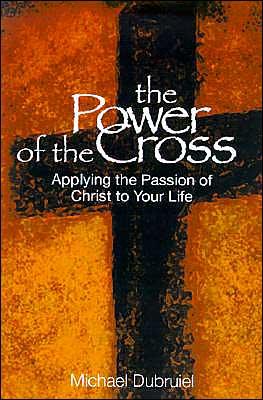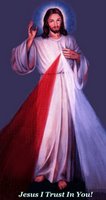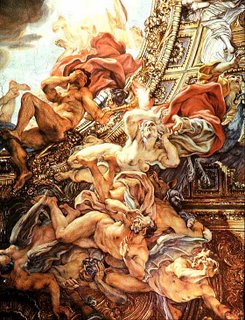Eucharist means..."thanksgiving"
Michael Dubruiel wrote a book to help people deepen their experience of the Mass. He titled it, How to Get the Most Out of the Eucharist. You can read about it here.
Michael Dubruiel's first blog.
Eucharist means..."thanksgiving"
Catherine of Siena is in The Loyola Kids Book of Saints by Amy Welborn.
I. Saints are People Who Love Children St. Nicholas,St. John Bosco, St. Elizabeth Ann Seton, Blessed Gianna Beretta Molla
Saints Are People Who Love Their Families St. Monica,St. Cyril and St. Methodius, St. Therese of Lisieux,Blessed Frederic Ozanam,
Saints Are People Who Surprise OthersSt. Simeon Stylites,St. Celestine V,St. Joan of Arc,St. Catherine of Siena
Saints Are People Who Create St. Hildegard of Bingen,Blessed Fra Angelico,St. John of the Cross,Blessed Miguel Pro
Saints Are People Who Teach Us New Ways to Pray St. Benedict,St. Dominic de Guzman,St. Teresa of Avila,St. Louis de Monfort
Saints Are People Who See Beyond the Everyday St. Juan Diego, St. Frances of Rome, St. Bernadette Soubirous, Blessed Padre Pio
Saints Are People Who Travel From Home St. Boniface, St. Peter Claver, St. Francis Xavier, St. Francis Solano, St. Francis Xavier Cabrini
Saints Are People Who Are Strong Leaders St. Helena, St. Leo the Great, St. Wenceslaus, St. John Neumann

An excerpt from The How to Book of the Mass by Michael Dubruiel
When our Lord gave the disciples on the road to Emmaus the bread that He had blessed and broken, "he vanished out of their sight" (Luke 24:31). It was then that they recognized Him. We receive the Lord as they did in receiving the Eucharist. Now, at the moment that He is within us, we too should reflect, as they did, on the Scriptures that He has opened to us during this Mass, especially on what has made our "hearts burn."
In our consumer-minded society, we can miss the treasure that we receive if we treat it like one more thing to "get" and then go on to the next thing. Our Lord is not a "thing." He is God, who has deigned to come intimately into our lives. We should reflect on His Presence within us and ask what He would have us do.
From the Loyola Kids Book of Bible Stories
Eucharist means..."thanksgiving"
 Ninth Day
Ninth DayEighth Day

Coming to the tomb of Jesus that first Easter morning, the women discovered an angel there, the rock rolled away. It was a shocking and unexpected sight. The guards, who were there to This is the power of the cross for the follower of Christ, no matter what happens to us or can happen to us we are not defeated. make sure that the disciples did not steal the body of the Lord, were also witnesses to this. They were overcome with fear—to the point of being “like dead men.” One experience, two groups of people, two different reactions. One group looks at the empty tomb and rushes to tell what they have witnessed. The other group is paralyzed by the life event. This wasn’t just something that happened thousands of years ago; it happens every moment of every day. Those who see the cross as the end of their life, meet death there; those who believe and place their trust in God, find in the cross life and victory.
St. Peter Chrysologus (the “golden-worded”) was known for
his clear and simple style of preaching. About the angel’s appearanceat the tomb, he preached, “Pray that the angel woulddescend now and roll away all the hardness of our hearts andopen up our closed senses and declare to our minds that Christhas risen, for just as the heart in which Christ lives and reigns isheaven, so also in the heart in which Christ remains dead andburied is a grave.”
For those who do not believe, life unfolds as a series of accidents.When a follower of Christ sees his life in exactly the sameway, Jesus calls that person foolish, slow to believe. Someone likethat needs to redirect his attention to the cross.
You can get John Paul II's Biblical Way of the Cross by Michael Dubruiel and Amy Welborn here.
In 1991, Pope John Paul II introduced a new Bible-based interpretation of the Stations of the Cross. This devotional guide invites readers to prayerfully walk in solidarity with Jesus on his agonizing way of the cross—from his last torturous moments in the Garden of Gethsemane to his death and burial.
Now with full-color station images from previously unpublished paintings by Michael O'Brien, this booklet creates an ideal resource for individual or group devotional use, particularly during the Lenten season.
Taking Up Our Cross. . . To Follow the Lord
For a brief, pointed and helpful guide,
You can get John Paul II's Biblical Way of the Cross by Michael Dubruiel and Amy Welborn here.
In 1991, Pope John Paul II introduced a new Bible-based interpretation of the Stations of the Cross. This devotional guide invites readers to prayerfully walk in solidarity with Jesus on his agonizing way of the cross—from his last torturous moments in the Garden of Gethsemane to his death and burial.
Now with full-color station images from previously unpublished paintings by Michael O'Brien, this booklet creates an ideal resource for individual or group devotional use, particularly during the Lenten season.
You can get John Paul II's Biblical Way of the Cross by Michael Dubruiel and Amy Welborn here.
In 1991, Pope John Paul II introduced a new Bible-based interpretation of the Stations of the Cross. This devotional guide invites readers to prayerfully walk in solidarity with Jesus on his agonizing way of the cross—from his last torturous moments in the Garden of Gethsemane to his death and burial.
Now with full-color station images from previously unpublished paintings by Michael O'Brien, this booklet creates an ideal resource for individual or group devotional use, particularly during the Lenten season.
Michael Dubruiel conceived and put together the small hardbound book, Praying the Rosary. Click on the cover for more information.
The Gospels show that the gaze of Mary varied depending upon the circumstances of life. So it will be with us. Each time we pick up the holy beads to recite the Rosary, our gaze at the mystery of Christ will differ depending on where we find ourselves at that moment.
Thereafter Mary’s gaze, ever filled with adoration and wonder, would never leave him. At times it would be a questioning look, as in the episode of the finding in the Temple: “Son, why have you treated us so?” (Lk 2:48); it would always be a penetrating gaze, one capable of deeply understanding Jesus, even to the point of perceiving his hidden feelings and anticipating his decisions, as at Cana (cf. Jn 2:5). At other times it would be a look of sorrow, especially beneath the Cross, where her vision would still be that of mother giving birth, for Mary not only shared the passion and death of her Son, she also received the new son given to her in the beloved disciple (cf. Jn 19:26-27). On the morning of Easter hers would be a gaze radiant with the joy of the Resurrection, and finally, on the day of Pentecost, a gaze afire with the outpouring of the Spirit (cf. Acts 1:14) [Rosarium Virginis Mariae, no. 10].
As we pray the Rosary, then, we join with Mary in contemplating Christ. With her, we remember Christ, we proclaim Him, we learn from Him, and, most importantly, as we raise our voices in prayer and our hearts in contemplation of the holy mysteries, this “compendium of the Gospel” itself, we are conformed to Him.

Jesus said to Nicodemus:“Just as Moses lifted up the serpent in the desert, so must the Son of Man be lifted up, so that everyone who believes in him may have
eternal life.”For God so loved the world that he gave his only Son, so that everyone who believes in him might not perish but might have eternal life.For
God did not send his Son into the world to condemn the world, but that the world might be saved through him.Whoever believes in him will not be condemned, but whoever does not believe has already been condemned, because he has not believed
in the name of the only Son of God.And this is the verdict,that the light came into the world, but people preferred darkness to light,because their works were
evil.For everyone who does wicked things hates the lightand does not come toward the light, so that his works might not be exposed.But whoever lives the truth comes to the light, so that his works may be clearly seen as done in God.
You can listen to an interview program with Michael Dubruiel about his book, The Power of the Cross. The interview is with Kris McGregor of KVSS radio. This is the fourth episode